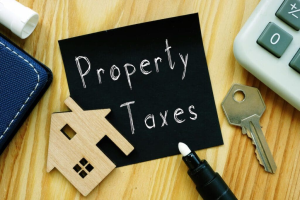The way millions of UK taxpayers manage and report their earnings is about to undergo its most significant transformation in a generation. HMRC’s MTD Income Tax initiative is expanding, and from April 2026, it will bring self-employed individuals and landlords into a new era of digital tax administration. The traditional annual Self Assessment tax return is being phased out, replaced by a system of digital records and quarterly updates.
This change, officially known as MTD for Income Tax Self Assessment (ITSA), has been a long time coming, with several revised start dates. However, the new deadlines are now firmly set, and preparation is no longer optional—it’s essential. For many, this transition will require significant changes to long-standing bookkeeping habits.
But what does this really mean for you? Is your business ready? This comprehensive guide will break down everything you need to know about the MTD for Income Tax changes. We’ll cover the crucial deadlines, who is affected, what your new obligations are, and the practical steps you can take today to ensure a smooth and stress-free transition.
What is Making Tax Digital for Income Tax (MTD for ITSA)?
Making Tax Digital is a flagship government initiative designed to create a modern, streamlined tax system that is more effective, more efficient, and easier for taxpayers to get right. The core principle of MTD is to move all tax and VAT records and submissions online, using compatible software.
MTD for VAT has been mandatory for all VAT-registered businesses since April 2022. The next phase, MTD for ITSA, applies these same digital principles to income tax for sole traders and landlords.
The system is designed to achieve several key goals:
- Improve Accuracy: By digitising records, HMRC aims to reduce the amount of tax lost to avoidable, human errors in manual calculations and data entry.
- Provide Real-Time Clarity: The move to quarterly updates gives taxpayers a clearer, more up-to-date picture of their tax position throughout the year, helping with budgeting and preventing surprise tax bills.
- Streamline Administration: Over time, the system aims to integrate tax records directly into a taxpayer’s digital tax account, simplifying the overall process of managing tax affairs.
Who Will Be Affected and When? The Phased Rollout Explained
HMRC has opted for a phased introduction of MTD for ITSA, starting with those who have higher qualifying incomes. It’s crucial to understand which phase you fall into.
Phase 1: From April 2026
- Who is included? Unincorporated businesses (sole traders) and landlords with a total qualifying annual income of over £50,000.
- What is qualifying income? This is the gross income from self-employment and/or property rental income, calculated per tax year, before expenses are deducted. If you have both sources of income, you must combine them to see if you meet the threshold.
- Start Date: The new rules will apply from the beginning of the first tax year that starts on or after 6 April 2026.
Phase 2: From April 2027
- Who is included? Sole traders and landlords with a total qualifying annual income of over £30,000.
- Start Date: This group will need to comply with MTD for ITSA rules from the beginning of the first tax year that starts on or after 6 April 2027.
What About Everyone Else?
- Those under the £30,000 threshold: The government has deferred the mandation for businesses and landlords with income below £30,000. HMRC will review the situation to determine how MTD for ITSA can be shaped to meet the needs of this smaller-scale group before setting a new date.
- General Partnerships: The mandation for general partnerships has also been delayed. Originally planned for 2025, a new start date has not yet been confirmed.
- Other entities: MTD for ITSA rules do not currently apply to trusts, estates, or trustees of registered pension schemes.
Your New Digital Obligations: The Core Requirements of MTD
Complying with MTD for ITSA involves three fundamental changes to how you manage your finances.
1. Keeping Digital Records
The days of shoeboxes full of receipts and simple, unstructured spreadsheets are over. Under MTD, you must keep all business records for your self-employment and property businesses digitally. This includes:
- All income/sales, including the date, amount, and category.
- All expenses, including the date, amount, and category.
This information must be stored using MTD-compatible software.
2. Using MTD-Compatible Software
You will need to use software that can connect directly to HMRC’s systems via an API (Application Programming Interface). This software will be used for record-keeping and for submitting your required updates.
- What counts as compatible software? This ranges from dedicated bookkeeping and accounting platforms (like QuickBooks, Xero, Sage, or FreeAgent) to simpler apps designed specifically for MTD. A standard spreadsheet (like Microsoft Excel) is NOT compliant on its own. However, it can be used in conjunction with “bridging software” that can take the relevant data from the spreadsheet and submit it to HMRC in the correct format.
- HMRC’s Role: HMRC does not provide its own software but maintains a list of approved software providers on its website.
3. Submitting Quarterly Updates and Finalising Your Tax
The annual tax return will be replaced by a multi-stage submission process.
- Quarterly Updates: You must send a summary of your business income and expenses to HMRC for each quarter of the tax year. These are not tax payments but summaries of your activity. The deadlines for these updates will be:
- Quarter 1 (6 April – 5 July): Deadline 5 August
- Quarter 2 (6 July – 5 October): Deadline 5 November
- Quarter 3 (6 October – 5 January): Deadline 5 February
- Quarter 4 (6 January – 5 April): Deadline 5 May
- End of Period Statement (EOPS): After the tax year ends, you must submit an EOPS for each business you run (e.g., one for your self-employment and one for your property income). This is where you will make final accounting adjustments and claim any reliefs or allowances.
- Final Declaration: This is the final step where you bring together all of your income sources (including employment, pensions, or investment income), finalise your tax position, and make your final tax payment. The deadline for the EOPS and Final Declaration is the same as the current Self Assessment deadline: 31 January of the following tax year.
How to Prepare Now: A Practical Checklist for Taxpayers
With the 2026 deadline approaching, proactive preparation is the best strategy.
Step 1: Confirm Your MTD Start Date
First, calculate your total gross qualifying income from self-employment and property rental. Does it exceed £50,000? If so, your start date is April 2026. If it’s between £30,000 and £50,000, you have until April 2027.
Step 2: Review Your Current Bookkeeping Methods
Are you still using paper records or a basic spreadsheet? Now is the time to evaluate your process. Understand that this method will no longer be compliant. This is the perfect opportunity to modernise and improve your financial admin.
Step 3: Research and Choose MTD-Compatible Software
Don’t wait until the last minute. Start looking at the software options available.
- Assess Your Needs: Do you need invoicing and expense tracking? Or just a simple way to record income and outgoings?
- Consider Your Budget: Software costs vary, with many offering tiered monthly subscriptions. Factor this into your business expenses.
- Take Advantage of Free Trials: Most providers offer free trials. Use these to test the software and see if it’s a good fit for your workflow.
Step 4: Go Digital and Get Organised
Start using your chosen software now. Don’t wait for the mandate to begin.
- Digitise Your Records: Get into the habit of recording transactions digitally as they happen. Use mobile apps to snap photos of receipts on the go.
- Set Up Bank Feeds: Connect your business bank account to your software. This will automatically import transactions, saving huge amounts of time and reducing manual errors.
- Talk to an Accountant: An accountant or tax advisor can be invaluable during this transition. They can recommend software, help you set it up correctly, and manage your quarterly submissions on your behalf.
The shift to Making Tax Digital for Income Tax is not just a regulatory hurdle; it’s an opportunity to modernise your financial administration. While the transition will require investment in time and potentially new software, the long-term benefits are clear. Real-time financial insights, improved accuracy, and a simplified year-end process can empower you to run your business more effectively.
The deadlines of 2026 and 2027 may seem distant, but they will arrive quickly. By understanding the requirements and taking proactive steps now, you can ensure you are not just compliant, but confident and in control of your financial future in a digital-first world.
Frequently Asked Questions (FAQs) About MTD for Income Tax
What happens if my income fluctuates above and below the £50,000 threshold?
Once you are required to join MTD for ITSA, you must remain in the system even if your income drops below the threshold in a subsequent year. There will be specific rules on when you can voluntarily leave the system, but generally, you should plan to stay in once you’ve joined.
I use an Excel spreadsheet for my records. Can I continue to do this?
You cannot use a standard spreadsheet on its own. To be MTD-compliant, your spreadsheet must be digitally linked to “bridging software” that can send the required data to HMRC. While possible, many find it simpler and more efficient to switch entirely to a fully integrated accounting software package.
Will I have to pay my tax every quarter?
No. The quarterly updates are for reporting purposes only, not for paying tax. The system of Payments on Account and the final balancing payment by 31 January will remain. However, the software will provide you with a running estimate of your tax liability, which helps significantly with planning.
What are the penalties for not complying with MTD for ITSA?
HMRC is introducing a new penalty system based on points. Taxpayers will receive a point for each late submission. Once a certain penalty threshold is reached (four points for quarterly submissions), a financial penalty will be charged. There will also be penalties for late payment of tax.
I am a landlord with just one property. Do these rules still apply to me?
Yes. The rules apply based on your total gross income, not the number of properties or businesses you have. If your gross rental income from that one property is over £50,000 per year, you must comply with MTD for ITSA from April 2026.
Are there any exemptions from MTD for ITSA?
Yes, some exemptions are available. This includes those who are “digitally excluded” – for example, due to age, disability, or living in a remote location with no internet access. You must apply to HMRC and prove you cannot meet the digital requirements to be granted an exemption.






























